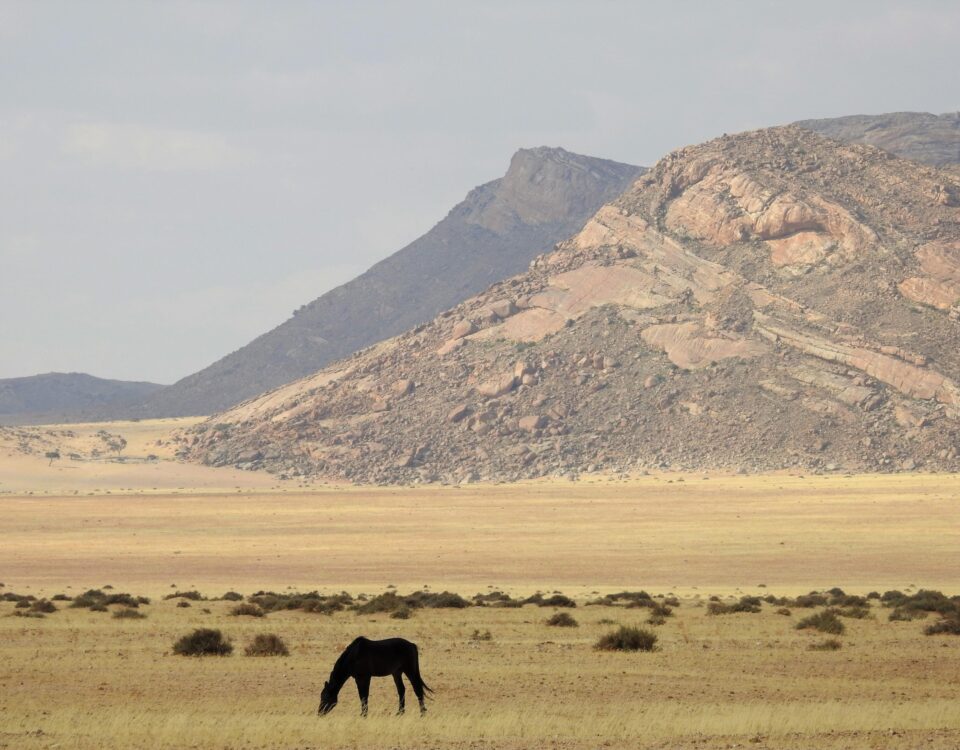
Namibian conservation scoops top conservation award
June 21, 2012Skeleton Coast Iona Transfrontier Conservation initiative: First results of aerial survey
June 21, 2012Managing Namibia’s shared freshwater fish resources in the Zambezi and Chobe rivers requires setting up a detailed database of the aquatic resources by researchers from Namibia, Botswana, Zambia and Zimbabwe says Dr Clinton J Hay, Chief Fisheries Biologist at the Ministry of Fisheries and Marine Resources.
The shared nature of the Zambezi and Chobe rivers complicates the management of the freshwater fish resources in the Caprivi Region. These resources play a vital role in the daily lives of the riverine communities, since a large section of the people depend primarily on fish for subsistence and income purposes. The resource provides employment, a crucial protein source and is used as barter. This is particularly true for the poorer communities, especially during periods of drought when more people depend on fish.
Communities on both sides of the Zambezi River depend heavily on fish for subsistence, which makes conflict virtually inevitable, since the Zambezi River forms the international border between Zambia and Namibia. An aspect that increases the likelihood of conflict is the differences in policies between the two countries. A closed season for fishing will be in place in Zambia from December 1 until the end of February, which is not the case in Namibia. The result is that Namibians will be allowed to fish during this time but the Zambians not.
It is against this background that the Ministry of Fisheries and Marine Resources (MFMR), with financial backing by the World Wildlife Fund – LIFE project in Namibia, initiated a project to co-operate with other riparian states to devise an effective and practical management system for implementation. This will ensure the sustainable utilisation of the fish resource in the rivers in and around Caprivi for the benefit of the local communities.
A detailed study which included the biology of the fish species and the migratory behaviour of selected species was conducted. Furthermore, the nature and characteristics of the subsistence fishery were studied, as well as the fishery management systems already in place. These management systems were assessed and their effectiveness and appropriateness studied in close collaboration with stakeholders from Zambia, which will hopefully facilitate the introduction of future joint-management initiatives.
A large portion of the fish caught near Katima Mulilo is sold at the fish market at Katima. This has become an important part of subsistence fishery. The majority of the fish vendors at the market are women, which emphasises the socioeconomic importance of the market. The study documented the species composition and fish sizes and also included information on the vendors trading at the market.
A group of gill-net fishermen at Impalila Island is assisting the Ministry in recording their catches. Record are kept of the catches during the first five consecutive fishing days of every month. The fishing effort, species composition and sizes of fish per species are recorded. This information is valuable and provides an over-view of the catches of subsistence fishermen in the region.
Exchange visits were arranged where a group of fishermen from Namibia met their Zambian colleagues to exchange information on fishing activities. Issues such as the value of a closed season, fishing methods and protected areas were discussed. The value of the principle of joint management and future collaboration was emphasised during these meetings.
MFMR researchers have compiled records from surveys done in the Zambezi and Chobe rivers over several years. These will serve as a baseline for future comparisons. The section of the river that was studied forms only a small part of the Upper Zambezi and did not include the sections in Western Zambia or any length of the river in Zimbabwe. The Upper Zambezi borders on several countries and for the effective management of the system, the database will have to be standardised.
An aquatic resources working group consisting of researchers from Botswana, Namibia, Zambia and Zimbabwe has already been established. The group will standardise the research methodology and develop a data set covering the entire Upper Zambezi River. Such a database will be essential for joint-management purposes. The first field survey was conducted in the Barotse Floodplains in Western Zambia with all four countries participating. The different types of fishing gear and recording of fish data were tested in the field. In addition, catches from the subsistence fishery and the fishing community were collected.
It is envisaged that the standardised methodology will be adopted by all the countries involved and that it will ultimately lead to a comprehensive database for the Upper Zambezi River, which again will be used to work towards the co-management of the shared fish resources.
This article appeared in the 2003/4 edition of Conservation and the Environment in Namibia.

